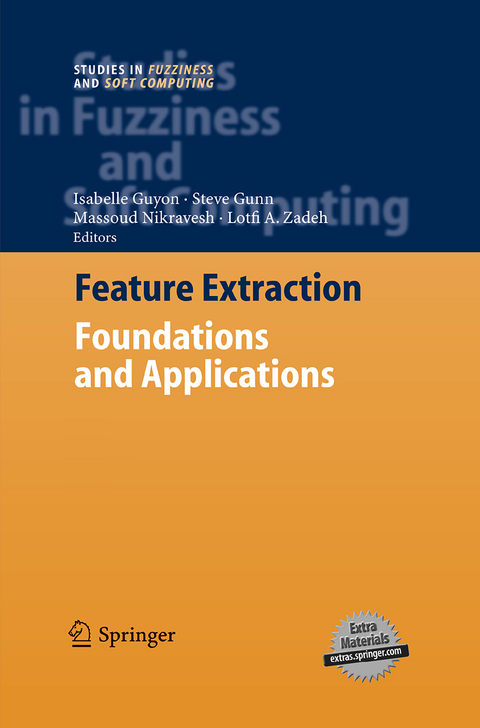
Feature Extraction
Springer Berlin (Verlag)
978-3-662-51771-0 (ISBN)
An Introduction to Feature Extraction.- An Introduction to Feature Extraction.- Feature Extraction Fundamentals.- Learning Machines.- Assessment Methods.- Filter Methods.- Search Strategies.- Embedded Methods.- Information-Theoretic Methods.- Ensemble Learning.- Fuzzy Neural Networks.- Feature Selection Challenge.- Design and Analysis of the NIPS2003 Challenge.- High Dimensional Classification with Bayesian Neural Networks and Dirichlet Diffusion Trees.- Ensembles of Regularized Least Squares Classifiers for High-Dimensional Problems.- Combining SVMs with Various Feature Selection Strategies.- Feature Selection with Transductive Support Vector Machines.- Variable Selection using Correlation and Single Variable Classifier Methods: Applications.- Tree-Based Ensembles with Dynamic Soft Feature Selection.- Sparse, Flexible and Efficient Modeling using L 1 Regularization.- Margin Based Feature Selection and Infogain with Standard Classifiers.- Bayesian Support Vector Machines for Feature Ranking and Selection.- Nonlinear Feature Selection with the Potential Support Vector Machine.- Combining a Filter Method with SVMs.- Feature Selection via Sensitivity Analysis with Direct Kernel PLS.- Information Gain, Correlation and Support Vector Machines.- Mining for Complex Models Comprising Feature Selection and Classification.- Combining Information-Based Supervised and Unsupervised Feature Selection.- An Enhanced Selective Naïve Bayes Method with Optimal Discretization.- An Input Variable Importance Definition based on Empirical Data Probability Distribution.- New Perspectives in Feature Extraction.- Spectral Dimensionality Reduction.- Constructing Orthogonal Latent Features for Arbitrary Loss.- Large Margin Principles for Feature Selection.- Feature Extraction for Classificationof Proteomic Mass Spectra: A Comparative Study.- Sequence Motifs: Highly Predictive Features of Protein Function.
| Erscheinungsdatum | 23.03.2017 |
|---|---|
| Reihe/Serie | Studies in Fuzziness and Soft Computing |
| Zusatzinfo | XXIV, 778 p. |
| Verlagsort | Berlin |
| Sprache | englisch |
| Maße | 155 x 235 mm |
| Gewicht | 1193 g |
| Themenwelt | Informatik ► Grafik / Design ► Digitale Bildverarbeitung |
| Schlagworte | algorithm • algorithms • Applications of Mathematics • Applied mathematics • Appl.Mathematics/Computational Methods of Engineer • Artificial Intelligence • artificial intelligence (incl. robotics) • Calculus • Cognition • Computer-Aided Design (CAD) • Computer-Aided Engineering (CAD, CAE) and Design • Computer Imaging, Vision, Pattern Recognition and • Computer Science • computer vision • Engineering • feature extraction • Feature Selection • fuzzy • Image Processing • image processing and computer vision • learning • Learning theory • linear optimization • machine learning • Maths for engineers • Modeling • Robotics • Sets • Speech Recognition • Statistical Learning |
| ISBN-10 | 3-662-51771-X / 366251771X |
| ISBN-13 | 978-3-662-51771-0 / 9783662517710 |
| Zustand | Neuware |
| Haben Sie eine Frage zum Produkt? |
aus dem Bereich


